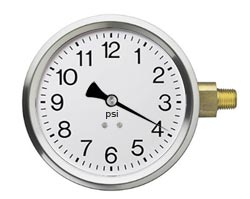

August 9 2022

Pressure change vs. timed movements. In the world of continuous belt screen changers, this has long been a topic for discussion. Many processors just set the machine up in pressure control mode and let it do its thing. But that isn’t the best way to run this style of machine. Here’s why.
In pressure control mode, the screen changer will advance the screen automatically upon reaching a predetermined extrusion melt pressure. Setting the machine up to run in only pressure control mode means that the operator must be keenly aware of what the “clean screen pressure” (CSP) is for a given extrusion condition and, more importantly, what increase from CSP the machine can handle while still functioning normally. Not knowing and understanding these two data points will lead to an incorrect pressure control set point.
If the pressure set point is too high above the CSP, there is a good chance that the screen will eventually be pinned to the breaker plate. This causes erratic screen movements and annoying alarms that frequently get reset and/or ignored. This will eventually result in an unplanned shutdown. Many times, particularly in refit installations where operators had previously used a slide plate machine, they are accustomed to shifting the plate only when the pressure increase over CSP has reached several hundred or even a thousand psi. This leads to the belief that continuous belt-style machines should be operated similarly. This is never the case.
In this case the machine will function normally, but it will advance the screen as often as the screen changer is capable and will consume excessive amounts of screen (more on screen use later). It is perfectly fine to run in this condition. It’s just not very efficient. The ideal pressure set point is normally 100-200 psi above the CSP.
Very simply, once the main control timer is set, the machine advances the screen at that fixed time interval. Very much like in pressure control, the cycle time set point can be improperly set, but the operating window is much larger. At the low end, there is a minimum cycle time where the screen will advance as often as the machine is capable. This advances the screen as frequently as an incorrectly low pressure setting, but the length of screen that is advanced is typically different. If the cycle time is set excessively long, the machine will suffer the same fate as an excessively high pressure set point and will start functioning erratically, causing alarms and eventually stop working altogether, resulting in an unplanned shutdown. The window between these two set points could be hours.
The short answer is that screen cost is a pretty low number so screen usage shouldn’t be a primary concern. We’ll continue this discussion in detail in one of our follow-up articles.
At Key Filters we instruct our customers that the best practice is to setup the screen changer using a timed cycle as the primary screen advance command with a pressure override as a backup. Our controls are designed to enable operators to program independent screen advance lengths for timed and pressure control commands. Some operator intellect is required to set these conditions but once determined, the machine will run automatically for the life of the screen belt. The ideal settings have the timed sequence long enough to generate an occasional pressure override but short enough that the screen doesn’t get pinned to the breaker plate. This can be anywhere from 15-60 minutes. The ideal pressure control set point is normally 100-200 psi above the CSP and the pressure control screen advance length is twice that of the timed cycle.